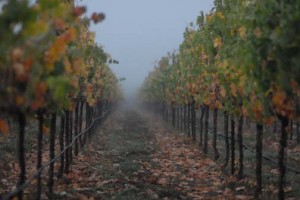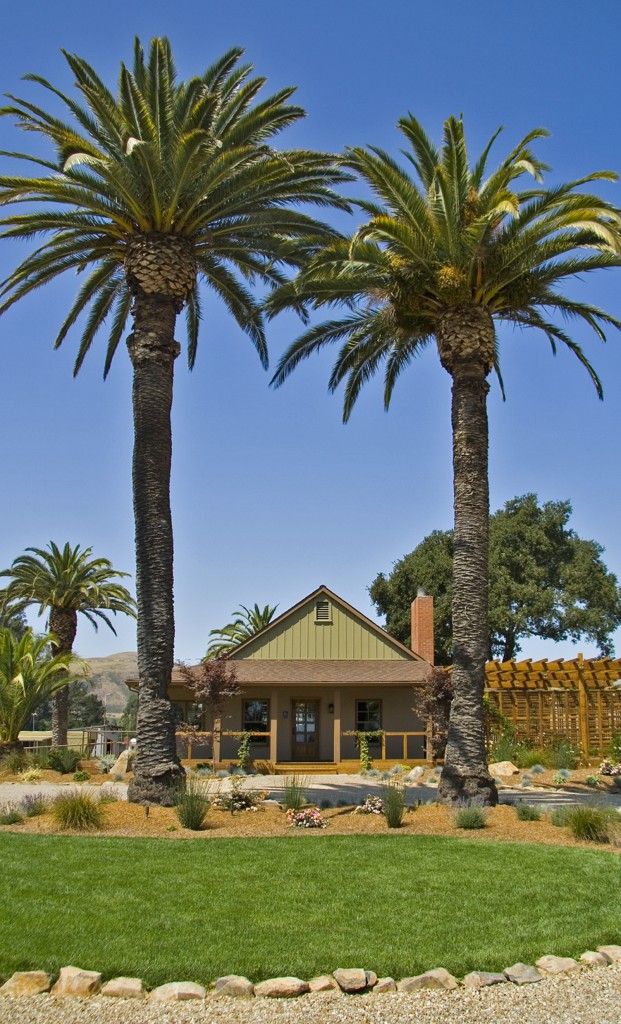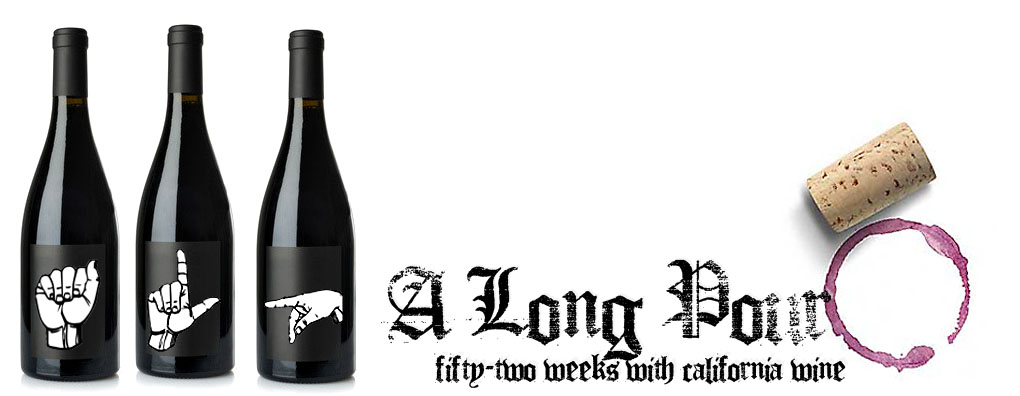Harvesting the Wind, Anaba Wines
Green isn’t always a bad thing as it relates to wine. While a “green” or young wine, maybe unappealing to the palate, a “GREEN” or Eco-friendly wine may even taste better according to some enthusiasts. But what does it mean to be “GREEN” in the wine industry today? The sustainability movement in vineyard management is it’s self a green or young development. Regulators are still wrestling with “organic” and “sustainable” classifications. What makes a vineyard “organic” or “sustainable”? The movement is still in barrel, waiting to be bottled, and consumed by the masses so to speak. Yet, winery after winery marches forward into the green frontier. But, are they not really marching backwards, rediscovering the roots of their trade?
Wine is one of man’s oldest carnal pleasures and passions. From Bible times until present, a good glass of wine has brought joy to the soul and even health benefits. In comparison to the centuries of wine cultivation by organic means, modern farming techniques such as tractors, the use of chemicals to control pests, and even bioengineering, have played a small role. The Israelites of ye’ olde were not exactly rolling around in a King David 4000 (patent pending) spraying for mealy bugs. They were by default “organic” and therefore “green” operations. So it should be no surprise that wine can be made and in fact very good wine, with a much smaller impact on the environment around it.
THE CASE FOR SUSTAINABILITY
 A vineyard is in its nature more environmentally friendly than many other crops. How so? For one, a vineyard once planted has a good chance of staying planted and thus preserving open space. The environmental impact of a crop that must be uprooted and replanted seasonally, or even multiple times a seasons, will require greater carbon emissions to do so and will render the habitat almost useless to local wildlife. An orchard might do better, requiring less effort year to year to maintain and a more useful space for some wildlife. However, there is a second reason vineyards often stay vineyards while other farmed land gets developed: value. Just look at the sale price for recent properties in popular areas like Napa Valley. With a vineyard potentially valued in the millions, it is unlikely in most cases it will be uprooted to make way for track homes or a strip mall. In comparison, other long-term produce such as oranges and avocados have been ripped out by the thousands of acres all across California to make way for development. Why? Because, the land is simply worth more as homes or retail space than it is as farmed land. It’s no wonder that wine country is some of the most beautiful we have in California as it is some of the best protected from large-scale development. Now to be fair, wine is not a magic crop. Land development of any kind is still land development and while a vineyard might provide some habitat for local wild life, there is an ecological price to be paid. But today, in increasing numbers, there are many in the wine industry going out of their way to soften those effects and use their vineyards to benefit both the wine consumer and the habitat they occupy.
A vineyard is in its nature more environmentally friendly than many other crops. How so? For one, a vineyard once planted has a good chance of staying planted and thus preserving open space. The environmental impact of a crop that must be uprooted and replanted seasonally, or even multiple times a seasons, will require greater carbon emissions to do so and will render the habitat almost useless to local wildlife. An orchard might do better, requiring less effort year to year to maintain and a more useful space for some wildlife. However, there is a second reason vineyards often stay vineyards while other farmed land gets developed: value. Just look at the sale price for recent properties in popular areas like Napa Valley. With a vineyard potentially valued in the millions, it is unlikely in most cases it will be uprooted to make way for track homes or a strip mall. In comparison, other long-term produce such as oranges and avocados have been ripped out by the thousands of acres all across California to make way for development. Why? Because, the land is simply worth more as homes or retail space than it is as farmed land. It’s no wonder that wine country is some of the most beautiful we have in California as it is some of the best protected from large-scale development. Now to be fair, wine is not a magic crop. Land development of any kind is still land development and while a vineyard might provide some habitat for local wild life, there is an ecological price to be paid. But today, in increasing numbers, there are many in the wine industry going out of their way to soften those effects and use their vineyards to benefit both the wine consumer and the habitat they occupy.
In the next few weeks and months, I hope to present the case for environmental sustainability in wine. I have enlisted the help of some top wine producers, as well as some up and coming wineries. This week we have such pioneer in vineyard sustainability and green practices.
Anaba Wines recently enjoyed a small bit of fame for  an innovative addition to their Sonoma County winery. In fact, in the month of January, article after article, from Wine Spectator and others, could be found online, all focusing on Anaba’s biggest fan. No, not Robert Parker (although I hope he is a fan), but their new 45′ tall wind turbine (fittingly, Anaba was named for the anabatic wind patterns that persist in their part of the county). The wind turbine is a first for a Northern California winery, but certainly not the last. The singular turbine is just a start to an environmental effort that will one day include a solar array and the possibility of more wind turbines for Anaba. In addition to applying state of the art wine making processes and integrating environmentally sustainable practices into their winery, Anaba is utilizing social media to stay in touch with existing customers and to attract new ones. Anaba is harnessing the winds of change.
an innovative addition to their Sonoma County winery. In fact, in the month of January, article after article, from Wine Spectator and others, could be found online, all focusing on Anaba’s biggest fan. No, not Robert Parker (although I hope he is a fan), but their new 45′ tall wind turbine (fittingly, Anaba was named for the anabatic wind patterns that persist in their part of the county). The wind turbine is a first for a Northern California winery, but certainly not the last. The singular turbine is just a start to an environmental effort that will one day include a solar array and the possibility of more wind turbines for Anaba. In addition to applying state of the art wine making processes and integrating environmentally sustainable practices into their winery, Anaba is utilizing social media to stay in touch with existing customers and to attract new ones. Anaba is harnessing the winds of change.
Anaba’s proprietor, John Sweazey, got his start in sales and marketing, an interest that drives him today. To John, “the romance of wine” lies not only in it’s creation, but the ability to successfully market and sell it. A trip to Napa with his Stanford fraternity brothers sparked his interest in wine and a nine-month sabbatical later in life, including time spent in the Burgundy and Rhône regions of France, added fuel to his interest. In 2003, John sold an estate finance company he started in the Bay Area and eventually purchased property in the Western Carneros region of Sonoma County. It was an ideal location to produce the Burgundy and Rhône varietals he had fallen in love with while in France. John enlisted the help of Jennifer Marion as Director of Winemaking & Vineyard Operations. A graduate with a degree in Viticulture and Enology from the University of California at Davis, Jennifer approaches wine with a get dirty attitude, saying “you cannot trust a winemaker with clean shoes and soft hands.” Jennifer brings a love of the vineyards to Anaba, a love she cultivated during her time with Napa Valley-based Crop Care Associates.
I asked John and Jennifer what they thought about some current trends in wine and why sustainability makes sense for them.
You have an extensive background in sales and marketing, so why trade that for wine?
John Sweazey (JS): “Finally becoming a vintner allows me to combine my experience with wine with significant experience in selling, marketing, and small business management. Wine production is not just the making of wine, but also the “selling” of wine–more important than ever, in today’s economic environment.”
Cabernet is still the workhorse of American wine. With Rhône varietals increasing in popularity, do you ever see that changing, or will Napa always be the big kid on the block?
JS: “Until Rhône varietal grapes can consistently sell for more than Cabernet, the Napa Valley will always be planted to Cabernet because it demands the highest price. On the other hand, due to the shift in the economy, the Cabernet-only wine drinkers will be reaching for better values on the shelf, and I believe they will be introduced to new varietals and wine growing regions. I find it interesting that so many people begin their wine journey with a grape like Cabernet. As we all know, it can be green and tannic and not much of a crowd pleaser right out of the gate. Do not get me wrong, after adequate time, Cabernet really comes into its own, and can be a beautiful wine. The crowd pleasing Rhône blends seem more appropriate for a novice palate. They can be fruity, juicy, complex enough for discussion, and terroir driven. There will always be Cabernet-only wine drinkers, but those adventurous enough to drink outside the box will be handsomely rewarded.”
Increasingly, wineries are promoting sustainability in their wine making process, even using it for marketing purposes. Are “sustainability” or “being green” just buzzwords in the industry, a hot trend, or is it the future of grape growing in California?
JS: “The wine industry is so heavily dependent on natural resources, so to be a long-term competitive player in the industry, one has to be executing sustainable practices, not to mention it often makes good business sense as well. Grape growing and winemaking require large volumes of energy. At Anaba, we have begun harnessing wind energy to power our estate vineyard and tasting room. Plans for a large solar panel project will aid in powering our future winery.”
You promote a hands on, get dirty, approach to vineyard management. Is there one aspect of wine making you most enjoy?
Jennifer Marion (JM): “Blending our Rhône wines. There is nothing more challenging than tasting through 50 plus barrels of wine and having to determine the exact proportion of each barrel that will make your blend pop. There is nothing more satisfying than having that “aha” moment, where all the moons align, where the blend becomes even better than the sum of all its parts.”
Who has inspired you in California wine?
JM: “The Tablas Creek group has done wonders for introducing Rhône varietals to the United States. Due to their commitment to Rhone grapevine propagation, winemakers and growers have access to Rhône planting material. Anaba continues to plant Rhone varietals in the Sonoma Valley, where the vines thrive, and although I may be a bit biased, make some pretty fantastic wines.”
The winds of change come often to the wine industry and while it is too early to predict how the recent economic times will change wine in the long run, progressive wineries will be right there to make the most of it. Anaba might not be on the typical list of Sonoma or Napa wineries to visit, but they should be. They would love to have you come by for a glass, or two.
60 Bonneau Rd., Sonoma, CA 95476
877.990.4188 (Toll Free)
707.996.4188 (Local)
707.996.1582 (Fax)
OPEN DAILY 10:30AM TO 5:30PM. Last tasting at 5:15pm.
“Anaba…elegant, classic wines borne by the wind.”
Current Production: 4,500 cases including Pinot Noir, Chardonnay, Viognier, Port, and several blend wines.




[…] she was completely crazy for planting a vineyard in the Esmeralda Valley”. Like John Sweazy of Anaba Wines we profiled two weeks ago, Gay has a background not in agriculture, but technology and marketing, […]